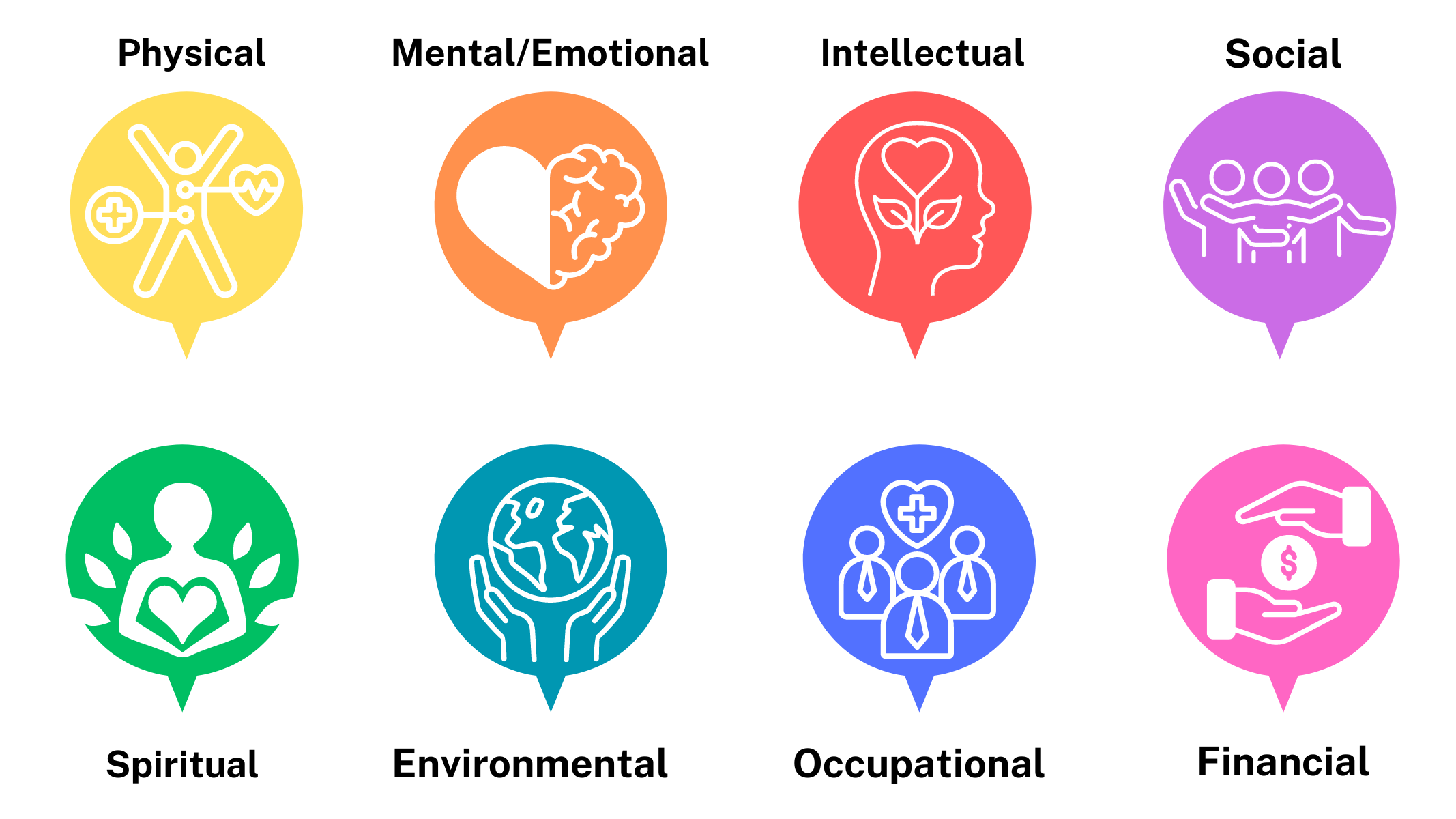Dimensions of Wellness
The World Health Organization (WHO) defines health as a state of complete physical, mental, and social wellness, and not merely the absence of disease or infirmity.
Wellness encompasses several mutually interdependent dimensions:

Aspects of physical health include exercise, nutrition, sleep, sexual health, and making healthy decisions around substance use.
Enables people to cope with the stresses of life, realize their abilities, learn well and work well, and contribute to their community. More than the absence of mental disorders.
Involves the recognition and acceptance of all of our thoughts and feelings, whether positive or negative.
Consists of critical thinking, stimulating curiosity, problem-solving, creativity, and lifelong learning.
Focuses on establishing and maintaining meaningful relationships with self, other individuals, groups and communities and develops from our interactions and connections with others.
Can stem from beliefs, faith, values, ethics or moral principles that provide purpose and meaning in our lives.
This means leading a lifestyle that values the relationship between ourselves, our community, and the environment. Individual wellbeing is affected by the environments we live in and we as individuals also have a significant impact on these environments.
Consists of an occupation that aligns with our skills and values, challenges us, and gives us a sense of fulfillment. Important components consist of goals and ambition, job satisfaction, and a feeling of meaning and purpose.
Being mindful of your financial decision-making. Supporting financial health can look like differentiating between needs and wants and living within your means, and managing short-term and long-term financial goals.